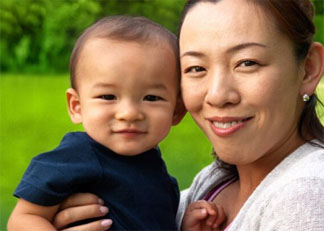What is IVF
IVF is a process by which a range of fertility issues can be overcome and outside the body,an egg and sperm can be joined in a specialized laboratory and then transferring the embryo to the uterus. The treatment can be performed using your own eggs and sperm, or using either donated sperm or donated eggs, or both.

happy test-tube baby on white background, isolated, horizontal photo
It is a complex series of procedures used to treat genetic and fertility problems and assist with the conception of achild. One cycle of IVF takes two weeks. It is the most effective form of assisted reproductive technology.
During IVF, mature eggs are received from ovaries and fertilized by sperm in a lab. After this fertilized eggs or eggs are well established in the uterus. This process is helpful for the couple those are infertile and unable to get pregnant.
IVF was originally devised to overcome infertility caused by blocked or absent fallopian tubes. Today, IVF is used to treat much more reproductive problems, including irregular ovulation, low sperm count or motility, and unexplained infertility.
Get an expert medical opinion.
If the fallopian tubes are damaged or the sperm is poor, it is obviously the only acceptable treatment. It is also usually the most effective treatment for most other types of infertility as well. The eggs are fertilized in thelaboratory and the resulting embryos than are placed into the uterus 2 to 5 days later.
IVF has evolved into a treatment for many different kinds of infertility, including infertility caused by Endometriosis, male factor infertility and unexplained infertility who have not been able to become pregnant with other fertility treatments.
IVF treatment demands a high level of expertise and details, an expert doctor coordinated effort between you and your partner. IVF consist of various steps.
The outcomes of IVF vary dramatically, depending on each couple’s reasons for infertility and their ages. The success rate will depend on your age, with a higher success rate in younger couples. IVF worked for 32.2% for women under 35, 21% for women between 38 and 39 and 2% for women 45 or over. Success rates decline as women age and significantly drop off after age 35.













